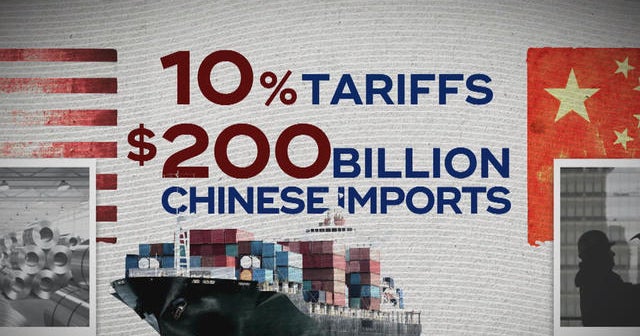Rising Tariffs And Their Impact On Canadian Business Confidence: A StatCan Perspective

Table of Contents
StatCan Data: Unveiling the Impact of Tariffs on Canadian Businesses
Statistics Canada plays a crucial role in monitoring and analyzing the health of the Canadian economy. They collect data through various surveys and indices, providing valuable insights into business sentiment and economic trends. Key surveys like the Canadian Survey of Business Conditions offer a detailed picture of business confidence, investment intentions, and employment trends. By analyzing this data, we can gain a clearer understanding of how rising tariffs affect Canadian businesses.
- Impact on Business Investment Plans: StatCan data reveals a noticeable decrease in planned capital investment across several sectors since the implementation of new tariffs. Businesses are hesitant to commit to large-scale projects due to increased uncertainty and higher input costs.
- Effects on Hiring and Employment Levels: Rising tariffs contribute to job losses and hiring freezes in affected sectors. The data shows a correlation between tariff increases and reductions in employment in industries heavily reliant on imported goods.
- Changes in Export Volumes and Market Share: Canadian businesses face increased competition in global markets due to higher prices resulting from tariffs. StatCan data indicates a decline in export volumes for certain goods, coupled with a loss of market share to competitors in countries with lower tariff barriers.
- Analysis of Specific Sectors Most Affected: Manufacturing and agriculture are particularly vulnerable to tariff increases. StatCan's sectoral analysis highlights the disproportionate impact on these industries, leading to reduced productivity and profitability.
- Regional Disparities in Impact: The effect of tariffs isn't uniform across Canada. Some regions, heavily reliant on specific export sectors or imports, experience more significant economic downturns than others, a trend reflected in regional data from StatCan.
Increased Costs and Price Pressures: A Major Concern for Canadian Businesses
Rising tariffs directly translate to increased input costs for Canadian businesses. Companies relying on imported raw materials, components, or finished goods face higher production expenses, squeezing profit margins. This cost increase often leads to a domino effect:
- Examples of Specific Tariff Increases and Their Effect: For example, the recent increase in tariffs on steel imports significantly impacted the Canadian automotive industry, leading to higher vehicle prices and decreased competitiveness.
- Impact on Supply Chains and Logistics: Tariffs disrupt established supply chains, forcing businesses to explore alternative, often more expensive, sourcing options. This adds complexity and cost to logistics and increases delivery times.
- Strategies Businesses are Employing to Mitigate Cost Increases: Businesses are responding to higher costs in various ways, including increasing prices for consumers, seeking alternative suppliers, and investing in automation to boost efficiency.
- Analysis of the Pass-Through of Tariff Costs to Consumers: StatCan data can help analyze how much of the increased cost due to tariffs is passed on to consumers. This is crucial for understanding the inflationary pressure exerted by tariffs on the Canadian economy.
Uncertainty and the Erosion of Business Confidence
The unpredictable nature of tariff policies creates significant uncertainty for businesses, hindering long-term planning and investment decisions. This uncertainty has a profound psychological impact, fostering a climate of apprehension and discouraging risk-taking.
- Impact on Investment Decisions (Both Short-Term and Long-Term): Businesses postpone or cancel investment projects due to the fear of further tariff increases, leading to reduced economic growth.
- Effect on Business Expansion and Innovation: Uncertainty discourages businesses from expanding operations or investing in research and development, hindering innovation and competitiveness.
- Concerns Related to Retaliatory Tariffs from Trading Partners: The imposition of tariffs can provoke retaliatory measures from other countries, further complicating trade relations and damaging Canadian businesses.
- The Role of Government Policy and Support in Mitigating Uncertainty: Government policies aimed at providing support and clarity to businesses can help mitigate the negative impacts of tariff uncertainty.
Sector-Specific Analysis: A Deeper Dive into StatCan Data
StatCan provides detailed data allowing for in-depth analysis of the impact of rising tariffs across various sectors.
- Detailed Examination of the Manufacturing Sector: The manufacturing sector, heavily reliant on imported inputs, is particularly susceptible to tariff increases. StatCan data reveals the extent of this impact on production, employment, and profitability within this sector.
- Analysis of the Agricultural Sector's Challenges: Farmers face challenges due to tariffs on agricultural inputs and export restrictions imposed by trading partners. StatCan data highlights the specific difficulties faced by various agricultural sub-sectors.
- Impact on the Energy Sector: The energy sector is also affected by tariffs on imported equipment and changes in global energy prices, an impact clearly detailed in StatCan's energy sector reports.
- Case Studies of Specific Businesses Impacted: Examining individual businesses' experiences provides a clearer understanding of the real-world consequences of rising tariffs.
Conclusion
Rising tariffs exert a significant negative impact on Canadian business confidence, as evidenced by the data meticulously collected and analyzed by Statistics Canada. Increased costs, uncertainty surrounding future trade policies, and sector-specific vulnerabilities all contribute to a challenging economic landscape for Canadian businesses. Understanding this impact through StatCan’s data is crucial for both businesses and policymakers. By regularly consulting StatCan's data, businesses can develop strategies to navigate these challenges, while policymakers can implement effective measures to mitigate the negative effects of rising tariffs and foster a more stable and predictable trade environment. Stay updated on the latest insights into rising tariffs and their impact on Canadian business confidence by regularly consulting Statistics Canada's data: [Link to relevant StatCan resources].

Featured Posts
-
 Peringatan Hujan Cuaca Ekstrem Di Denpasar Bali Besok
May 29, 2025
Peringatan Hujan Cuaca Ekstrem Di Denpasar Bali Besok
May 29, 2025 -
 Gambling On Calamity Examining The Los Angeles Wildfire Betting Trend
May 29, 2025
Gambling On Calamity Examining The Los Angeles Wildfire Betting Trend
May 29, 2025 -
 Astqlal Alwtn Wajb Wtny Mqds
May 29, 2025
Astqlal Alwtn Wajb Wtny Mqds
May 29, 2025 -
 Alastqlal Msdr Ilham Llajyal Alqadmt
May 29, 2025
Alastqlal Msdr Ilham Llajyal Alqadmt
May 29, 2025 -
 Analisando O Sucesso A Frase Iconica Que Marcou Geracoes
May 29, 2025
Analisando O Sucesso A Frase Iconica Que Marcou Geracoes
May 29, 2025
